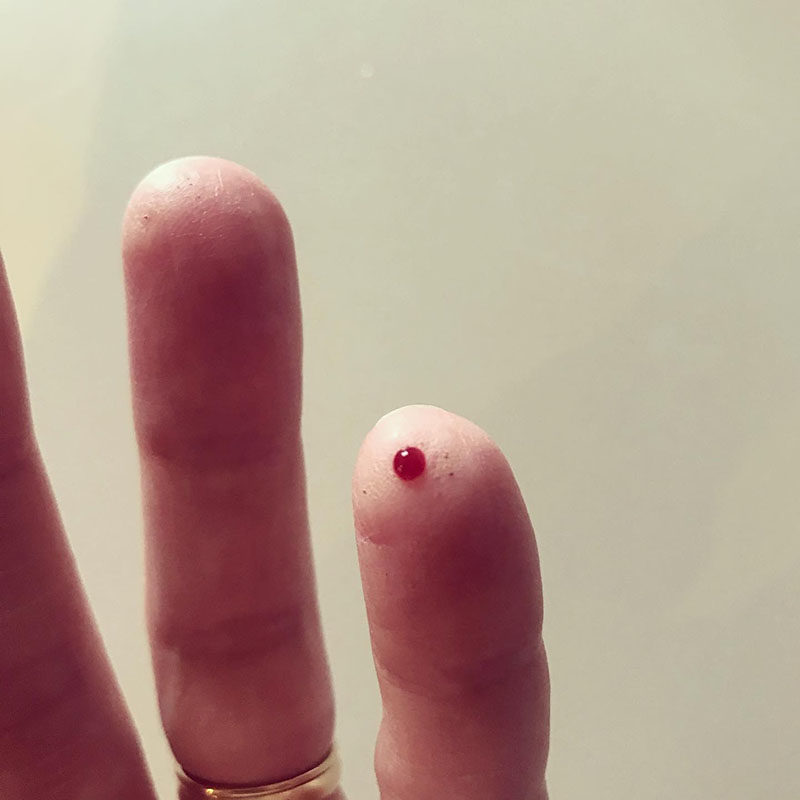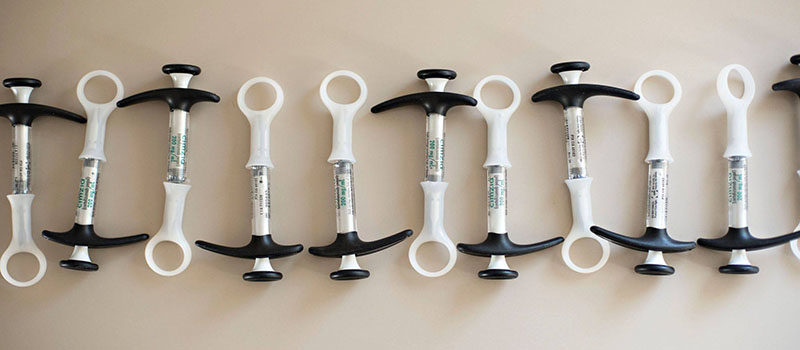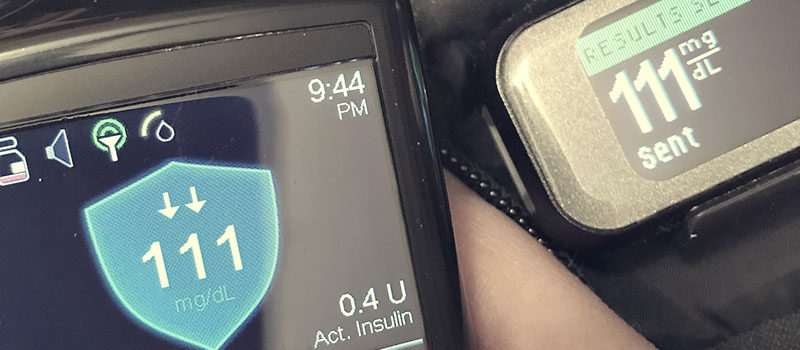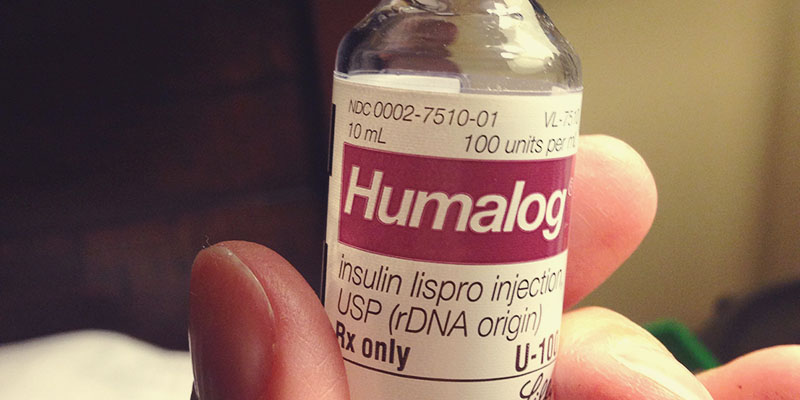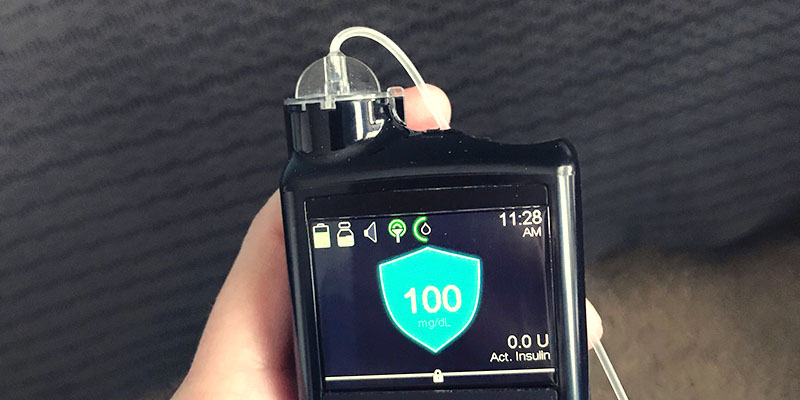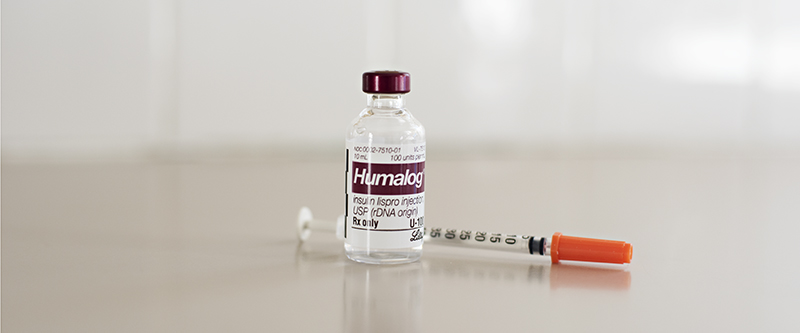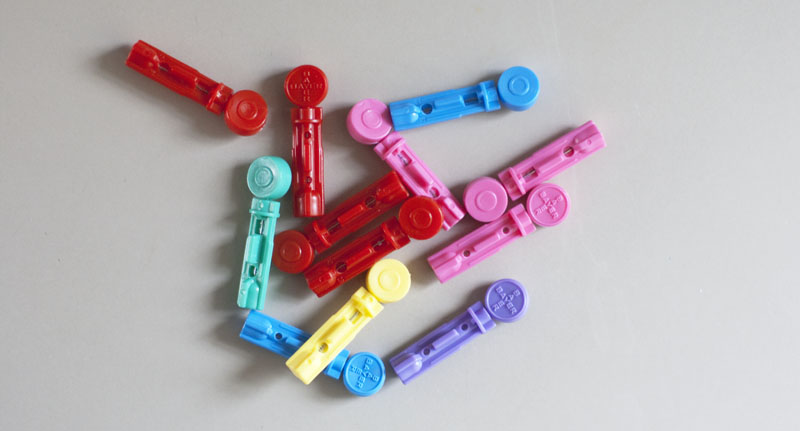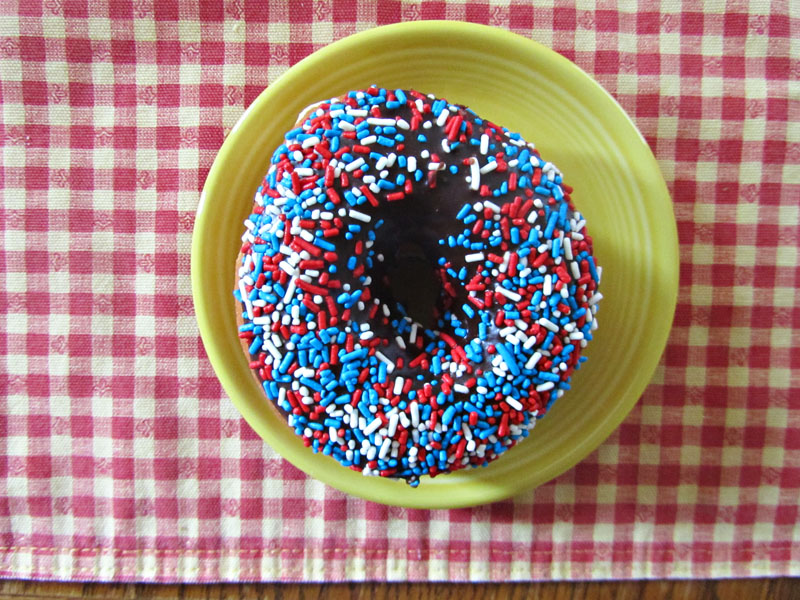
Last week I had a few hellish nights surrounding a much-anticipated trip with my girlfriend. If you hang in there with me for a sec I’m going to swing this conversation back around to the hot take culture we’re experiencing right now, particularly on social media. But the trip… oh the trip! I love to travel. I dream about traveling and I am instantly inspired by looking out a plane window or a car window onto new-to-me surroundings. Give me 75mph on a rural highway in Nebraska or a flight to Florida high above the clouds, the experience alone makes me giddy. I also have this other thing—and it’s a brain problem—and it’s called anxiety. My travel anxiety is further complicated by the very nature of type 1 diabetes, which demands I prepare for all contingencies in order to… well… in order to stay alive. Type 1 is a jerk like that.
So while I was tremendously excited to ditch town for a few days, my brain was freaking out a little. Or a lot really. I rolled over in bed the night before we left home and thought blearily, “Is today the day I get on a plane?” and after that I was wide awake. When you wake up at night and can’t sleep you play all kinds of games to try to either fall asleep or, at the very least, rest your body. It was only 3:00am, so I tried to be cool but I really was getting more amped up as each hour passed. Enter type 1 diabetes and before long my body started burning ketones.
Ketones are chemicals that build up when your body starts to burn fat for energy. Sounds good until you read a bit more and learn that in T1 diabetics a build-up of ketones can lead to Diabetic Ketoacidosis (DKA) which, if left untreated, can lead to a coma or death. I’ve had DKA before and it was tremendously scary. I’ll do anything to avoid it, which is why, when my body started producing ketones—likely due to stress—in the early morning hours before I boarded a plane, I got more stressed. I also started tending to myself. Gone was the carefree and excited feeling of getting to travel, and present was the need to pound liquids, deal with nausea without actually vomiting, dose insulin to flush the ketones, and try to eat a few carbs to give myself something else to burn. This was not my first rodeo. I struggled to eat; my toast tasted like cardboard in my scared, dry mouth. I struggled to drink and ran to a gas station for a sugar-free Powerade. I pounded the sidewalks out front in 19 degree weather in order to get the blood flowing and do something with my energy. All the while I kept checking for ketones (aka peed on a stick), kept pricking my finger for my glucose, and managed to pack up my 9th grader and wish her a good day. Yes, I did feel like throwing up while driving her to school but I was determined to send her off. It’s amazing what a little determination will do. When I got into Maralee’s minivan for the drive to the airport I looked like death. Already really pale, I was a ghostly shade of pale at that point. I caught her up to speed and suggested that if I wasn’t clear of ketones by the time we hit the airport she should drop me at the hospital and go on her way without me. (I’m certain she wasn’t excited about that option, for many reasons.) My protocol for self-treatment worked beautifully, however, and though I was way behind on sleep, I righted the ship and had zero ketones a hour later. We got on the plane, I crashed in a nap, and we landed to start our adventures. This story was essentially repeated two more times over the course of our four nights away. Two more nights of anxiety, illness, and stress. Two more days with hard crashes into morning naps. And yet, we made loads of memories. So really, I won!
I write all this down to say that my body is unique. I have type 1 diabetes and a few other doozies in the autoimmune department, and until Maralee was witness to every little blood sugar and insulin pump and ketone issue for five days straight, I didn’t think about how much energy it takes to simply live. That’s my life with diabetes. It requires nitty-gritty, hands-on babysitting day in, day out.
People in newstories, people in your newsfeed, friends, enemies, whoever… their needs are unique as well. Before you issue your hot take online—and by that I mean your opinion—take a minute and consider, what do I really know about their story? Am I the best person to comment on their needs? If not, how can I say something encouraging and true rather than critical?
Some of you in the midwest may have heard a KETV news story about a little girl in Iowa who fell asleep on a bus recently. The bus driver didn’t walk back to make sure all children were unloaded and the little one’s morning bus ride went from a 30 minute routine to an hour and 10 minutes. She spent an extra 40 minutes riding the bus. That’s not the worst thing for the average kid, but for this child it was a very bad thing. This little one has a rare form of diabetes where she swings from low glucoses to high ones without any warning. I think I read that she can’t take any insulin without dropping dangerously low.
What I witnessed on Facebook was a surprising number of commenters who were angry with the girl’s mother for raising a stink about her daughter being left on the bus. Without reading the article, without listening to the story, they commented and judged her. They assumed this child was an average child without any special needs. And even when the mother—a single mom, as it turned out, with epilepsy and no husband and no family support close by—began to defend herself in the comment section, people were still terribly rude.
Yes, online commenting is notoriously nasty. But it doesn’t have to be. And it’s not just Facebook, it’s everywhere. I cannot stand being on Twitter because I feel like people are just punching each other there. If I guard my Instagram account it’s a relatively nice place to be. But I’m not content with this and I want to talk about it. WE ARE ALL UNIQUE AND YOU DON’T KNOW EVERY STORY.
Even on my diabetes support groups, which are often a really cozy and encouraging space on the internet, I’m finding folks who simply go for the hot take. Instead of perhaps supporting a person’s desire to stockpile some meds or pantry items in case this coronavirus spreads to the US, they are harping on **fellow* diabetics saying this virus is no different from the flu. And yet, they don’t know which T1 also has RA and is on meds which suppress her immune system (raising my hand). Autoimmune issues tend to run in packs, but even if that wasn’t so, which T1s are also on dialysis? Which ones are caring for elderly parents with lung problems? Which ones have survived cancer and have depressed immune systems? I could go on and on.
The truth is, your judgement is hurtful and your judgement is unwelcome.
Before you type, stop for a minute and ask yourself, why am I writing this? How might the original poster interpret my comment? If there’s a chance it could be perceived as hurtful, perhaps I should hold off. And if it’s something that needs to be said, should I take this to a private venue?
I’ve been thinking about that mom in Iowa and I’ve wanted to contact her to share a bit of love. Her life sounds hard. Imagine having epilepsy and then having a medical tricky child who you have to put on a bus each day to get to school. Imagine the fear of wondering if she might drop too low or shoot so high she needs to be hospitalized or worse, dies. Imagine trusting the bus driver to do his job and then he, for whatever reason, messes up. Imagine all the worries of a normal parent and than multiply those by a hundred, or by a thousand.
Honestly, I don’t know what to do about my issues with anxiety and travel. I’ve spent several summers in therapy with different therapists working on the issue and yet, here I am after a particularly bad (yet marvelously wonderful) trip. I survived it, but I’m not going to travel again until I have some more solutions. Therapy, better drugs, whatever; I’m game for whatever works. What I do know is that I’ll keep pressing on towards hope because I truly truly love traveling and I want to see the world. We figure out how to do what we love to do, even when it’s not convenient or simple. All I’m asking for today is a bit more grace, a bit more patience… and a heart and typing fingers that give up the hot take in order to truly see another human behind the screen.
